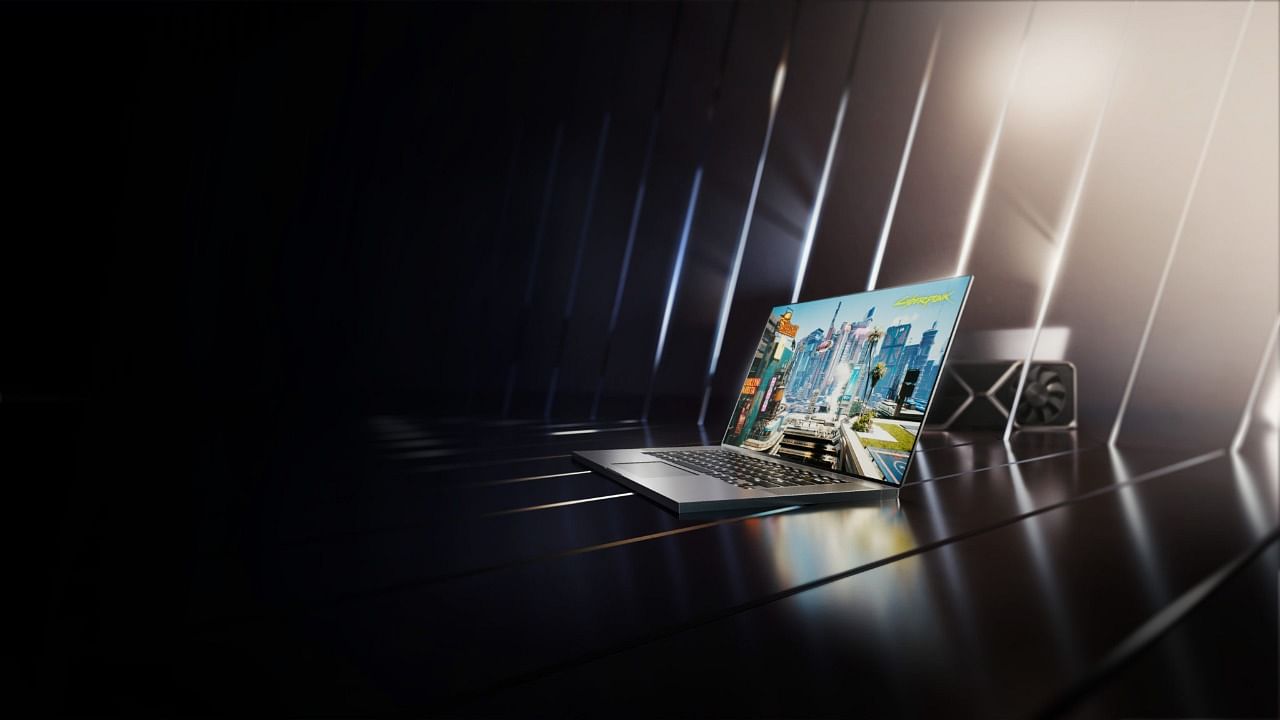At its CES 2021 presentation on Monday, Nvidia announced RTX 30 series graphics processors for laptops, based on the Ampere architecture that has already found its way on desktop.
Nvidia announced three models for the RTX 30 laptop graphics processors to begin with: RTX 3080, RTX 3070 and RTX 3060. According to the company, laptops featuring these GPUs will be available later this month.
The RTX 30 series for laptops feature the same technical features as the desktop RTX cards, with the exception of needing to fit into the 150-watt TDP ceiling for laptops.
RTX 3060 laptops are “faster than anything on the market today,” said Jeff Fisher, senior vice president of NVIDIA’s GeForce business, during the presentation.
He claimed the RTX 3060 is 30 per cent faster than the PlayStation 5 and delivers 90 frames per second on the latest games at ultra settings 1080p.
Laptop models with the RTX 3060 GPU will start at $999.
Coming to the RTX 3070, Nvidia claimed that laptops with the GPU will be “1440p gaming beasts.” The company boasted that the RTX 3070 is 1.5 times faster than the RTX 2070, its immediate predecessor, and can deliver 90 frames per second on ultra settings at 1440p. Models with the RTX 3070 will start at $1,299.
Coming to the top of the stack, Nvidia claimed the RTX 3080 will be at the heart of the fastest gaming laptops, and come with up to 16 gigabytes of GDDR6 memory.
Nvidia claimed that the RTX 3080 can push over 100 frames per second on ultra settings at 1440p, and even go as high as 240 frames per second across top titles like Overwatch, Rainbow Six Siege, Valorant and Fortnite. Models with the RTX 3080 will start at $1,999.
In terms of technology, the RTX 30 laptop cards feature the same 2nd generation ray-tracing cores, 3rd generation Tensor cores and desktop-grade Ampere Streaming Multiprocessors, allowing them to push over 2 times the FP32 compute throughput.
The cards feature support for the full stack of RTX technologies, along with Nvidia's DLSS 2.0 upscaling technology to improve frame rates without compromising on image quality.
Nvidia also announced what it calls the "third generation" Max-Q technology, which the company says uses AI and new system optimizations to make high-performance gaming laptops faster and better than ever.
Nvidia also introduced the Resizable BAR feature, which allows a CPU to address the entire GPU memory space, effectively maximizing available resources for games and improving performance. This feature will also make its way into the desktop RTX 30 GPUs, starting with the RTX 3060, and coming to the higher-end products in the stack via a VBIOS update.
Another feature introduced is Dynamic Boost 2.0, which also uses AI to to balance power between the CPU, GPU and GPU memory. According to Nvidia, the AI networks in Dynamic Boost 2.0 manage power on a per-frame basis, allowing laptops to constantly determine where power is needed the most to squeeze out the most performance possible.
According the Nvidia, whether the application is loading the CPU, the GPU, or the GPU memory, the result is a larger performance boost than ever before. In a GPU-bound workload, like gaming or 3D rendering, the system can allocate up to 20W more to the GPU, automatically and seamlessly boosting frame rates or reducing rendering times.
Dynamic Boost 2.0 will be available for all RTX 30 Max-Q laptops out of the box.
Laptops with RTX 30 GPUs will go on sale starting January 26, with over 70 models expected from various manufacturers.
